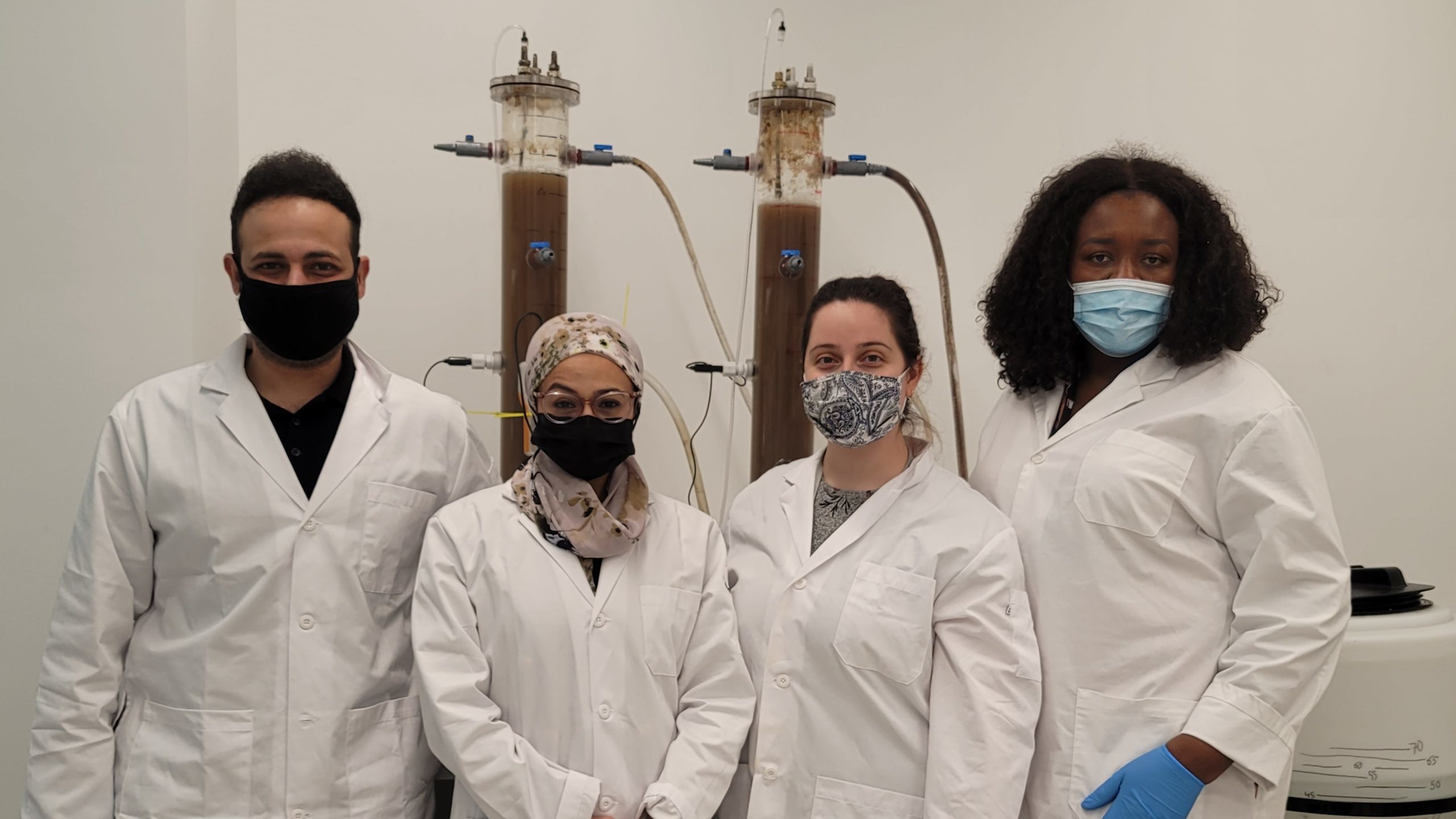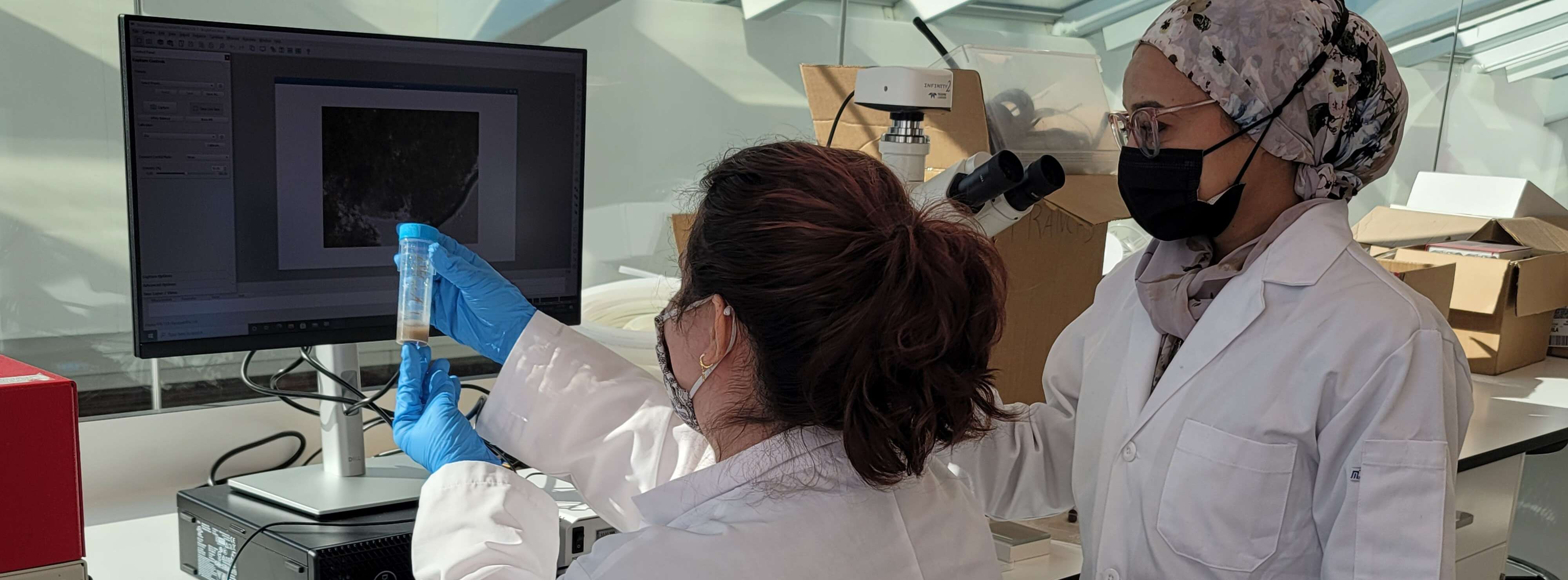Angela Murphy believes the best way to solve complex issues is by bringing people from a wide range of backgrounds and experiences to the table. “The largest problems are multifaceted and cannot be solved with too narrow a viewpoint,” says Murphy, director of the Urban Water Research Centre.
That’s why the centre — located at Toronto Metropolitan University formerly known as Ryerson — has assembled 40 experts across six different faculties and 13 departments. Together, they’re tackling big, urgent issues facing urban water systems, from the repercussions of climate change to contaminants of emerging concern.
“We work collaboratively on projects with urban planners, with civil engineers, with chemists, with policy wonks,” says Murphy. “As soon as you get those different kinds of people sitting together and meeting, it’s dynamite.”
Bringing circular thinking to wastewater treatment
One of those people is Rania Hamza. The recently appointed civil engineering professor wants to make wastewater treatment plants part of the circular economy. Wastewater contains a wealth of resources, she says: energy, phosphorus, polymers and other valuable materials that can all be captured and reused.
But perhaps the most important component is the H2O itself. Even in freshwater-rich Canada, we have limited amounts in the heavily populated areas where we need it most. “I want to recover the water,” says Hamza. “So that means I need to remove every pollutant.”
One of her main focuses is contaminants of emerging concern. Right now, more than 600 types of these chemicals that were recognized in the literature and are not currently monitored or regulated. We don’t know what happens to them in wastewater facilities. Nor do we know how much gets released from treatment plants into rivers and lakes — or how much risk that poses to ecosystems and human health.
So Hamza teamed up with two colleagues at the Urban Water Research Centre: microbiologist Kim Gilbride and legal expert Patricia Hania.
The trio categorized the contaminants into three broad groups. One was pharmaceuticals, ranging from over-the-counter products to prescription medications and veterinary drugs. Another was microplastics and microfibres. The third category was PFAS: extraordinarily persistent per- and poly-fluoridated substances used in fire fighting foams and a host of other applications.
From there, Hamza, Gilbride and Hania looked at how the different groups could be monitored, measured and regulated. They scoured the published literature, interviewed industry stakeholders and examined how other jurisdictions are dealing with these issues. Among other findings, they concluded that wastewater treatment systems need to be modernized to address this chemical pollution.
According to Hamza, it was a powerful example of trans-disciplinary research. “I learned so many new things that I have never thought of about the legal framework,” she says. “I also taught my colleagues in law how the wastewater treatment plant works.”
Tracking plastic contaminants
Hamza is also teaming up with Roxana Sühring, another early-stage researcher at the Urban Water Research Centre. The environmental chemist worked as a policy advisor to government agencies in Europe for several years before joining the faculty of science at the Toronto Metropolitan University.
Much of Sühring’s research revolves around plastics. And while plastics themselves pose big problems, the up-and-coming star focuses on the dangerous chemicals they contain: things like colourants, UV stabilizers, corrosion inhibitors and a host of other potential toxins.
“I look at contaminants that come from everyday products that we use in our daily life. And then how chemicals — particularly plastic additives — can leach out of those products,” she explains.
Sühring wants to answer important questions about these ubiquitous contaminants. How can they travel vast distances — in some cases, as far as the Arctic? What do they do once they get into rivers and lakes? Do we have mitigation options? Can we use them to identify pollution sources? To help identify where the plastics originated, she is currently collaborating with forensic scientists to see if it’s possible to “fingerprint” the substances.
She’s also working with Hamza to track the fate of microplastics and PFAS during wastewater treatment. Together, they’re determining how much the treatment process can remove and how these pollutants affect the crucial micro-organisms that break down organic material in wastewater. “Some of those chemicals can potentially kill off microbial communities within the wastewater treatment plant,” says Sühring.
Breaking down silos
To address these emerging threats, Sühring believes it’s also important to work closely with the water and wastewater industry. “There’s a lot of options for developing innovative solutions,” she says.
Murphy agrees, pointing to the enormous benefits of organizations like the Ontario Water Consortium that connect researchers with companies and municipalities looking to solve real-world problems. “We’re a huge supporter, she says. “We have been a member since the very beginning.”
Forget siloes. For Murphy, it’s all about adding more chairs to the table — fostering collaboration across disciplines and attracting bright, talented researchers like Hamza and Sühring who bring fresh ideas. “It’s where the best thinking comes from,” she says.



